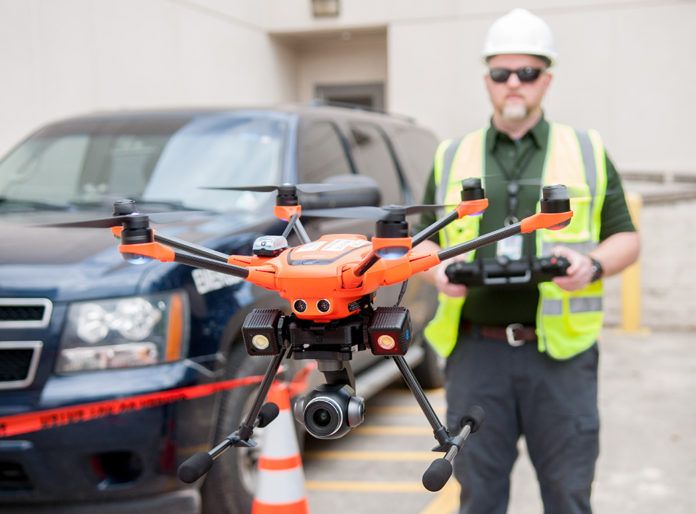Jason Smith has flown more than 60 missions with a single drone since the 2017 creation of Louisiana Department of Environmental Quality’s Unmanned Aircraft Systems program. Along the way, he has cataloged a wealth of footage for documentation, 3D mapping, tracking and volumetric calculations.
Smith, DEQ’s UAS manager, tells Baton Rouge Business Report the program is limited only by the agency’s ability to invest in new hardware and software. If all goes well in the next one to two years, drones could be taking air samples in real time, detecting leaks, tracking oil spills and responding to emergencies, among other tasks.
A self-taught drone pilot, Smith is one of five at DEQ currently holding an FAA pilot’s license. “I began flying a little $20 toy in my garage. I would fly around with the door closed and hover it in front of a box fan … and try not to destroy anything.” He worked his way up from there, gradually increasing the size of his investment as his confidence grew.
Other DEQ pilots are located in the agency’s various regional offices. Smith conducts most of the advanced UAS flights for DEQ, while the regional pilots primarily provide documentation for emergency response activities. Mike Algero, surveillance division administrator, and Jeff Dauzat, emergency and radiological services division administrator, are also involved in the program. “If there’s a train derailment in Lake Charles, our Lake Charles guy can get there quickly,” Smith says. “He won’t have the advanced equipment, but he’ll have a small UAS for visible light photos and video.”
DEQ has several long-term goals for its UAS fleet, although the current hardware falls a bit short. Smith currently flies a DJI Matrice M210-RTK Industrial Drone with enhanced GPS guidance systems. The next big investments would likely enable air sampling capabilities, to be performed in tandem with the agency’s Mobile Air Monitoring Lab, and Optical Gas Imaging cameras. Incorporating UAS into the process would enable more conclusive air sampling as drone pilots could perform live monitoring and remote sample collection.
The expense of the equipment is the biggest hurdle, as a single air sampler costs between $10,000 and $15,000, compounded with the cost of a larger UAS device to carry it. As Smith’s current DJI drone isn’t equipped to carry a payload, future investments would also involve additional aircraft. “While it’d be great to buy one drone with interchangeable capabilities, that’s just not feasible. They recommend that you dedicate an aircraft to a specific task.”
A bigger fleet would also provide necessary redundancy should there be a mechanical failure.



